Graham Reid | | 9 min read
Fly on A Windshield
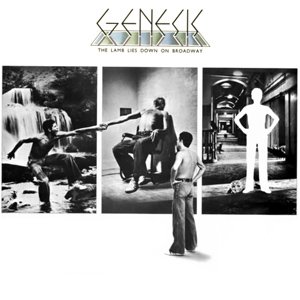
The Lamb Lies Down on Broadway by Genesis – written by Peter Gabriel and released in late 1974 – begins with an instrumental opening passage. The piano is playing a virtuosic pattern, faint echoes of a moving guitar, distant chimes.
We’re being welcomed into a mystical world and a fictional version of New York City.
As the music transitions between the mystical and the rock and roll, the scene is set, and we are introduced to the main character of our story within the album – Rael. He is a young Puerto Rican man and a graffiti vandal. As he’s emerging from the subway, the original liner notes tell us, “Patrolman Leonowich looks at Rael in much the same way that other patrolmen look at him, and Rael only just hides that he is hiding something.”
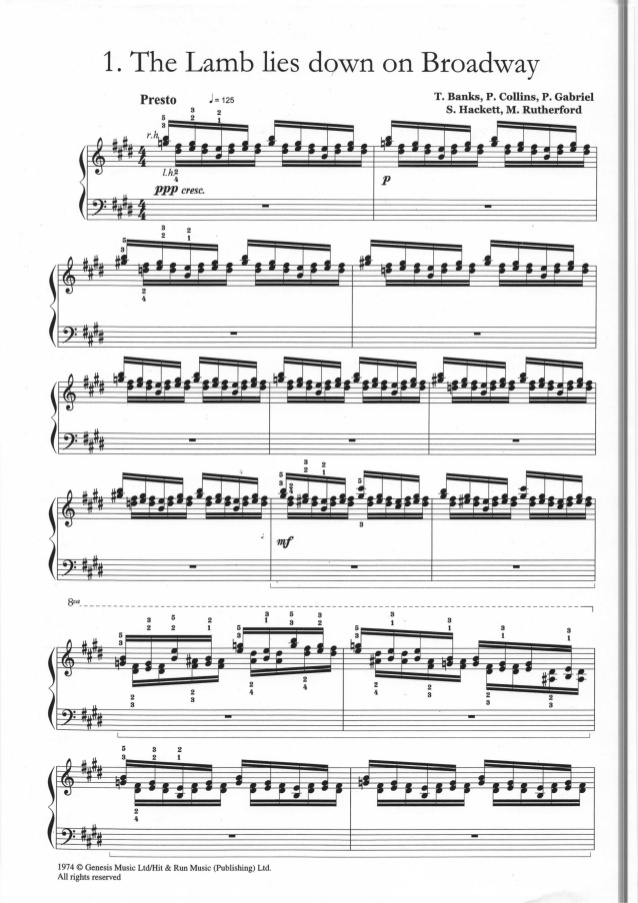 He is of course hiding his spray can, but this line also first hints that Rael is a deep character covering up parts of himself that we will later discover. We are also introduced to a passing character called Suzanne getting into a taxi cab, though she is not mentioned again.
He is of course hiding his spray can, but this line also first hints that Rael is a deep character covering up parts of himself that we will later discover. We are also introduced to a passing character called Suzanne getting into a taxi cab, though she is not mentioned again.
Rael comes to see an actual lamb laying down in the middle of Broadway, and he is drawn away from the hustle and bustle of the city and shows us the purity of nature and humanity. The lamb introduces us to a few possible theories of this album.
The first is that Rael is on drugs and hallucinates the following events – but I do not follow this interpretation because it would take meaning away from the album.
The second theory is that Rael is hit by Suzanne’s taxi and dies; the album is set in a purgatory.
My preferred theory is that the album is an allegory for religion. The lamb is a reference to Christ being the Lamb of God and is the first of many Biblical and important cultural references.
We will revisit these theories throughout the album.
Still in New York, Rael sees a great screen approaching him with images of the world – almost like a wall of death. Again from a Biblical perspective, this could represent the Temptation of Christ, when he was shown images of the great kingdoms of the world.
To Rael, perhaps it is a manifestation of his desire to see the world, but he’s stuck in the city as a poor Puerto Rican boy.
The music shifts to reflect this – it becomes instrumental, very melodic, psychedelic, and ethereal.
This song, Fly on a Windshield, contains many cultural references, but flipped on their heads. We have more references to death with the smell of cyanide gas in the air.
Rael awakes in a Cuckoo Cocoon or some kind of wool case. He wonders if he is dead or tripping – another reference to his death. The liner notes suggest he’s in a cave, and he hears the sound of dripping water. He begins to wonder if he is insane and trapped in an asylum somehow, he feels serene.
Like the Buddha, he believes that the terror of the cave is just an illusion. He was somehow saved from the screen, and this is now a fantasy, so he need not worry.
He awakes in the cave again, now panicked and feeling claustrophobic.The cave closes in around him, trapping in In the Cage. He feels a “liquid fear.”
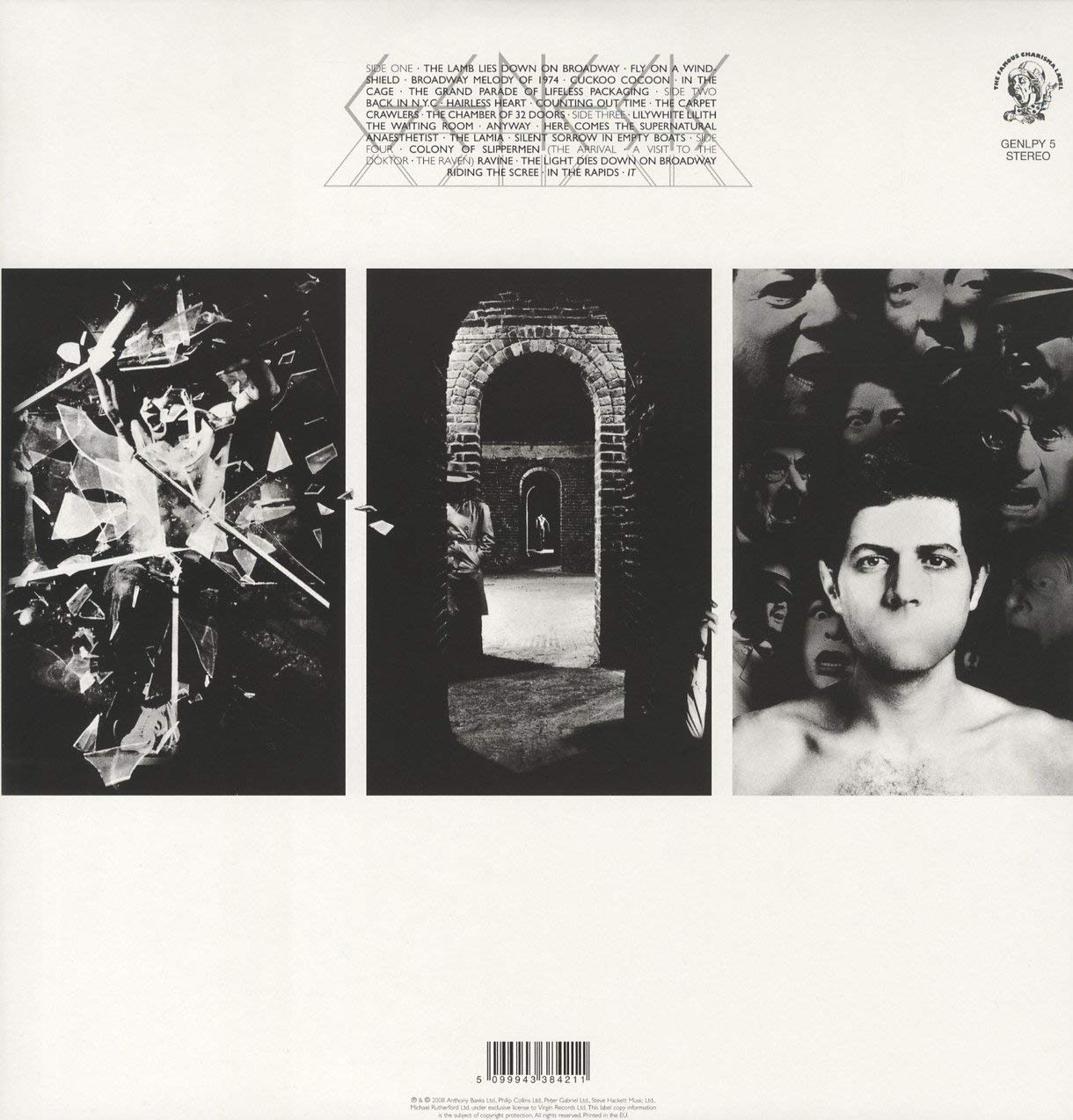 Though unrelated to this album, Zigmunt Bauman’s 2006 book Liquid Fear says that, “Even in the absence of a genuine threat [man] will produce a reaction appropriate to the presence of real danger.”
Though unrelated to this album, Zigmunt Bauman’s 2006 book Liquid Fear says that, “Even in the absence of a genuine threat [man] will produce a reaction appropriate to the presence of real danger.”
Perhaps Rael is hallucinating this whole event, but to him it is real. He notices many other people trapped in cages lamenting “in memories of their wasted wings.” Concentrating on what they could have been instead of who they are, much like Rael wishing to escape the city earlier.
He then sees his brother John looking in on him, but instead of helping, he just weeps tears of blood. Seeing his brother trapped in a cage would of course upset John, but perhaps he sees Rael dead. John is also an explicitly religious name (as opposed to the Spanish, Juan we might expect in a Puerto Rican family).
John was present at the crucifixion viewed Jesus as a brother (literally being instructed to take care of Mary as his own mother after Jesus died).
Rael is then taken to a factory and hears, “It’s the last great adventure…” – death.
Again he is whisked away to some kind New York.
Rael is reflecting on his own life (and possible death or insanity). Instead of solving his problems, he begins wrecking the city and throwing Molotov cocktails. He believes it is his own fault for landing in this prickly situation, and he embraces that. He closes himself off to love, and wallows in self-pity, “cuddling the porcupine” as it were.
Though a reference to masturbation, I believe Gabriel is referencing not the physical act, but Rael’s attitude. Yet, he begins to fondly remember his first love.
The music itself takes us back with a bouncier, less serious tune, to a time when Rael was confident in his skill as a lover – all thanks to a book. Yet he learns very early that he does not know everything.
Carpet Crawlers is often regarded as the highlight of the album. Here we encounter more themes of life, death, and preservation, and, of course, more religious references. Gabriel mentions Alistair Crowley, and English occultist, and then goes on to discuss several parables. Common stories are all turned on their head, with the poor being persecuted and superman defeated.
Is Rael seeing a vision of the future?
The echoing guitar underneath a rapid synthesizer ostinato suggest something mystical and beyond this world. Overlaying this, we hear a choir of Gabriels telling us that we’ve got to “Get in to get out.”
 Everyone needs validation, no one is sincere, and everyone thinks they are in charge in the city. Rael tries every possible path in the Chamber of 32 Doors, but always comes to the beginning. He needs to accept his fate and find himself.
Everyone needs validation, no one is sincere, and everyone thinks they are in charge in the city. Rael tries every possible path in the Chamber of 32 Doors, but always comes to the beginning. He needs to accept his fate and find himself.
We again see Rael as a Christ-like figure, being at the right hand of his Father, and his Mother beside him. This song is perhaps an allegory to the Garden of Gethsemane, where Jesus was asking of an alternate path, but followed his destiny in the end.
Rael comes upon “Lillywhite Lilith” who is blind, both in sight and to Rael’s dark side. She leads Rael to The Waiting Room to meet his fears. Lilith here is not a mal force forcing Rael along, but instead leading him on the way he must go.
This is an interesting comparison to the mythological figure of Lilith – Adam’s first wife later turned child-stealing demon.
Anyway dives even deeper into our resounding theme of death. We are over halfway through the album and Rael – or perhaps Christ waiting on his trial with Pilate – knows of his impending demise. “It’s back to ash, now you’ve had your flash boy,” we are told. Our time of earthly fame and glory is done.
Ashes to ashes, dust to dust.
Rael is beginning to feel scared, and we hear his agony through the racing piano and heavy drum and guitar beats. Rael is then forced to confront death personified, but seems to be left alive.
Rael is entranced by the wondrous sights, sounds, and smells along his journey, and again we meet a mythological figure, The Lamia. Perhaps this is connected to Lilith, as Lamia is a Greek adaptation of the Lilith myth, here the spurned wife of Zeus and again a child-eating monster.
Again Gabriel captures literary references by quoting John Keats’s 1819 poem of the same name. Rael finds a sexual appetite in the beautiful forms of the Lamia, but instead, they die, and Rael ingests them. Analysing this from the Jesus allegory, Peter and Jesus loved each other, but Peter denied Jesus at his trial three times, just as Rael killed the three heads of the Lamia.
One more notable piece of instrumental music on this album is Silent Sorrow in Empty Boats. The music presents classical themes. Throughout, the rock band almost sounds like a string quartet. A choir joins for a short time, perhaps echoing Rael’s sadness on his journey through the cave. Perhaps they are a heavenly choir helping Christ on his journey.
Beginning with a Wordsworth literary reference, Rael continues on his journey and meets a colony of deformed people only interested in self-gratification. People who have failed by giving into their lust with the Lamia.
Rael sees that he has become one of them. Rael again finds his brother John and they meet a doctor who explains that the only cure is by cutting off Rael’s lust at the source – his penis. Rael agrees and here, instead of being a Christ figure, takes the place of the Christian of Pilgrim’s Progress, complying with scripture and cutting off body parts that offend. Rael’s member is then stolen by a raven, and Rael begins to chase it asking John for help.
John refuses, and Rael sees the penis tube dropped in a river, and it floats away down The Ravine. He is now forced to leave his vices behind.
In the ravine, we hear the strange sounds of the Theremin, overtop of blowing wind. This is a desolate place. The mandolin lightly strumming almost gives the Theremin the impression of a whistle, like this is the music of an ghost town in an old western.
Finally Rael sees in front of him a portal home. But alas!
In the canyon below, he sees John being swept away by the current. Still on the Christian’s journey, he must decide if wants to go back to the vices of the world or do the right thing and save his brother. He jumps in to save John, and looking back sees The Light Die[s] Down on Broadway. In the Rapids we go through the perilous journey to save John. Water rushing all around us, we catch him, but then realise that it is actually Rael. By being willing to give up his own life for another, Rael saved himself, now an allegory of the resurrection.
We finally arrive at It.
This song is the conundrum of the album, because It can be anything.
Most likely, this is Rael’s sense of enlightenment. Perhaps this came from his drug trip, perhaps it is his exit from purgatory into paradise, or perhaps it is his nirvana as a Christ, Buddha, or other religious head.
The music begins bright and moving, but as the drums keep a hard grove and the melody holds no clear pattern, the song is almost psychedelic and trance-like. We fade out of the album with no hard ending, which leaves us wondering where Rael is and if he will return.
In conclusion, the construction of a double album with a clear narrative is no easy task.
he fracture between Peter Gabriel and Genesis becomes evident in the latter half of the album (it would be Gabriel's last with the band), as lyrics become more sparse and the instrumental music takes over to fill the time.
The first half of the album really carries our narrative of Rael being Jesus Christ – a representation of both man and the divine.
Author’s note: A complete musical analysis of this album is also interesting. See Kevin Holm-Hudson’s Genesis and The Lamb Lies Down on Broadway (2008).
Griffin Jenkins is a music director, pianist and linguist originally from West Virginia. His main musical interests are Broadway style musical theatre and historical organ repertoire. He is also a linguistics researcher focusing in American Sign Language and Yiddish. Griffin remains an active performer and teacher throughout Auckland.
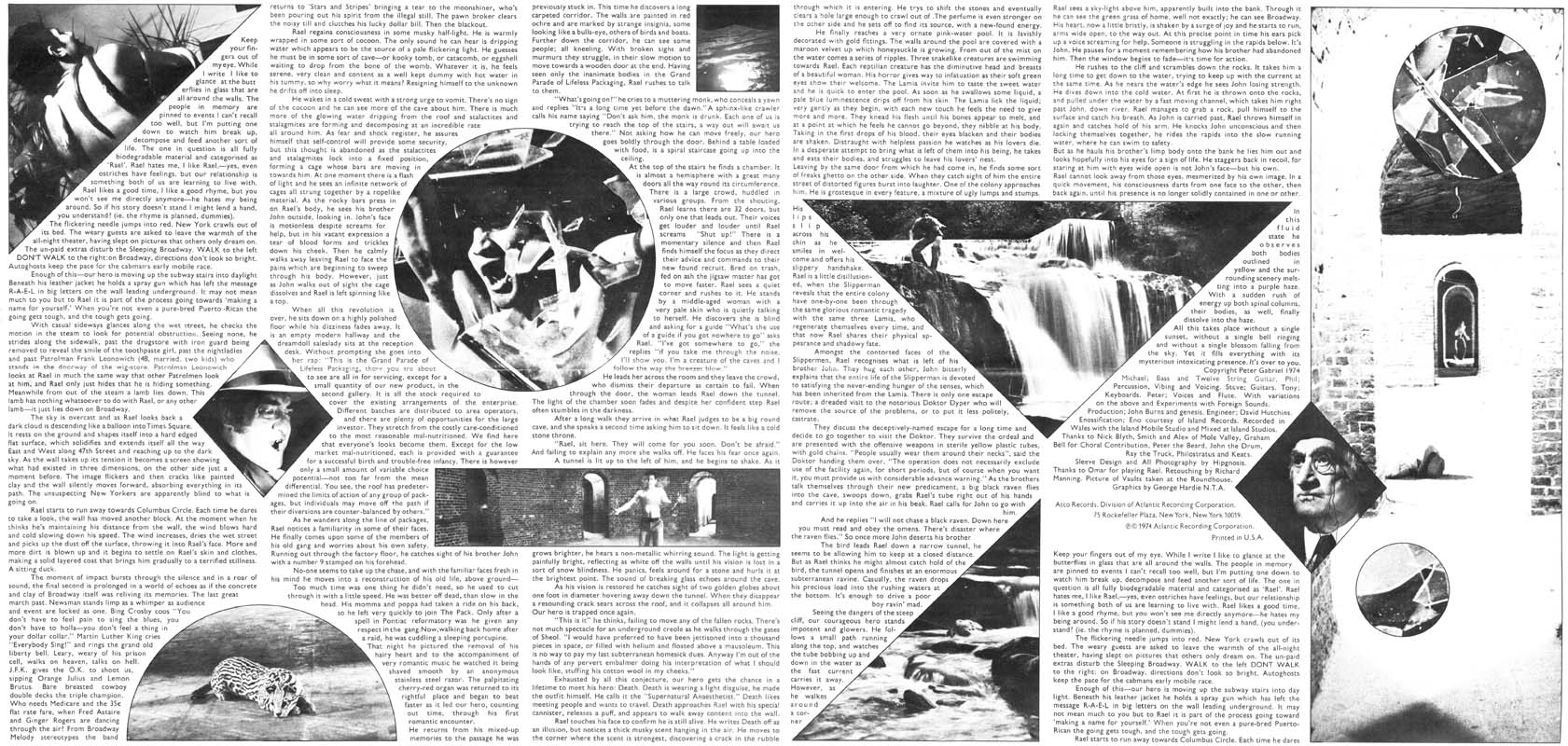
Other Voices Other Rooms is an opportunity for Elsewhere readers to contribute their ideas, passions, interests and opinions about whatever takes their fancy. Elsewhere welcomes travel stories, think pieces, essays about readers' research or hobbies etc etc. Nail it in 1000 words of fewer and contact graham.reid@elsewhere.co.nz.
See here for previous contributors' work. It is wide-ranging

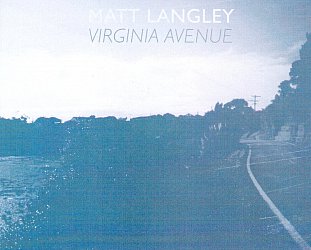



post a comment